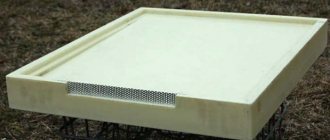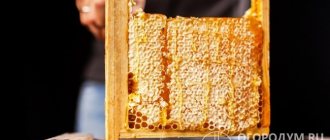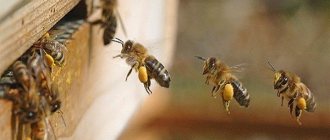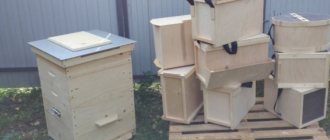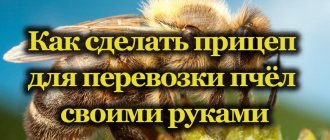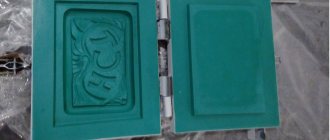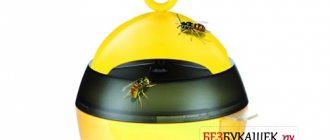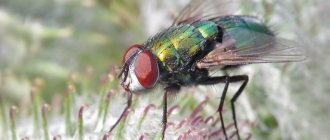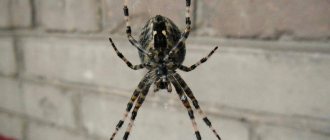Advantages and disadvantages of polyurethane foam hives
Beekeepers, when setting up their apiary, look for materials that are light, strong and durable. Polyurethane foam hives meet these requirements. Main advantages:
- The material protects the finished bee house from freezing in winter and overheating in summer. Bad weather conditions (humidity, sudden temperature changes) do not affect the design.
- Polyurethane foam is a lightweight material and therefore has good mobility.
- Can be assembled, reconstructed and repaired. Parts are easy to replace as they are made in standard sizes.
- The material is safe for bees and humans. However, it initially exhibits a pungent odor that is unpleasant to insects.
- The design will last a long time. The average service life of polyurethane foam is 25 years.
- The material is durable, dense, and will not be chewed by rodents or other insects.
- The material does not allow sounds to pass through, so bees can work quietly without distractions.
The listed advantages attract beekeepers. However, these designs also exhibit a number of disadvantages:
- structural parts are replaced at least once every 5 years;
- high probability of buying low quality polyurethane foam. It will transmit sounds and succumb to changes in weather conditions. An unfavorable environment will negatively affect the activity of insects. Bee nectar will turn out to be of inappropriate taste, color and smell;
- prolonged exposure to direct sunlight destroys the material, so it is recommended to cover the houses with water-based paint.
The listed disadvantages are easily eliminated, and the advantages completely cover them. Therefore, polyurethane beehives are a great idea for a modern farm.
About the material
PPU and PPS boards are more in demand in industrial construction than other foamed polymers. The structure of the material is similar to expanded foam. It consists of polyurethane foam and polypropylene foam from synthetic polymers filled with gas.
Expanded polystyrene and polyurethane foam have a number of advantages:
- high waterproofing;
- good adhesion;
- low vapor penetration;
- low thermal conductivity.
The material does not become moldy. It is not spoiled by rodents. PPU and PPS are resistant to mechanical stress, have a low specific gravity and provide good sound insulation. But it is worth emphasizing that beehives made of polystyrene foam are easily flammable and deformed from direct rays of the sun. Therefore, the material is hidden from aggressive ultraviolet radiation.
Required tools and materials
To create polyurethane foam bee houses, metal blanks are used. The molds used for the production of PU foam hives are made from sheets of metal. Their designs are different, depending on the type of bee house: collapsible or solid. The main quality of casting molds is their ability to withstand heavy loads.
During production, a lubricant is required to reduce adhesion between metal and polyurethane foam. To create gas-filled plastic, special filling machines are used, for example, NAST-10 or UZK-22.
It is better to purchase ready-made molds, but this will cost more. Therefore, the purchase is advisable for the production of a large number of houses. If you produce it yourself, you will need welding equipment, a grinder, and other tools.
Additional accessories and tools for assembly: metal ruler, stationery knife, glue, corners, self-tapping screws, screwdriver, screwdriver, fine mesh, felt-tip pen.
How does the material affect the quality of honey?
Poles and Finns were the first to produce PPU and PPS hives. Later, domestic beekeepers began to resort to the material. Our beekeepers were wary of polyurethane foam. Because styrene accumulates in the body of insects and in bee products. However, there was no scientific confirmation of the harmfulness of the polyurethane foam material. Studies show that the accumulation of styrene is negligible, and they are safe for insects and honey products.
SES services do not inspect hives made from polyurethane foam. The examinations have proven that the material is completely safe, does not affect the quality of honey and can be used for the construction of apiaries.
Preparing parts
To create hives from polyurethane foam you will need a set number of components. These parts will allow the structure to fully function:
- body - the main part of the hive that protects the bee colony;
- bottom – 3 elements (protection against ticks, tray and bottom). For the mesh against small arthropods, use a die cut coated with zinc. Cells less than 3 mm in size;
- pallet - materials for manufacturing: plywood, PMMA (organic glass, plexiglass), galvanized sheets. The element is necessary to monitor the health of the bee colony. It accumulates death and mites, by which the beekeeper can judge the strength of the family and the degree of infestation. When moving, the pallet is removed;
- cover - a part to protect the bee house;
- hundred frames – made in standard sizes.
For cutting and assembling molds for casting beehives made from polyurethane foam, metal with a thickness of at least 6 mm is taken. Cutting is done using a grinder. The sheet metal is bolted to the prepared table. It is then carefully cut through, but not to its full thickness. This is necessary for less heating. After passing along the entire length, the finished form breaks off. The edges are cleaned.
Read also: How much do irises cost in a vase?
Assembling a hive from polyurethane foam
To create the body, 8 metal sheets are taken: 4 external and 4 internal. Spacers (bars) are placed between the slabs located inside, and the outer sheets are connected with bolts. On their inner side, pads are attached to form recesses.
The lid and base are equipped with grooves to insert sheets. To do this, you need to attach metal strips along the edges and bolt them to the part. Holes are made along the perimeter of the base into which metal rods are placed and bolts are screwed onto them. Additional holes are made in the lid for filling the material and a valve for closing.
The roof is assembled from two rectangular sheets. One is equipped with protruding sides, the second - with a protruding inner part. The bottom consists of a frame and a mesh in the center.
Pouring molds for the body, roof and base:
- Treat the internal surfaces with a lubricant, for example, a wax solution.
- Pour the polyurethane mixture into the mold through the hole made.
- The foam gradually expands. Once outside, close the hole with a valve.
- Let the mixture harden (30 minutes).
- Remove the bolts, knock down the top of the mold, remove the spacers and the remaining sheets.
- Trim off excess and clean edges.
To protect against sunlight, it is recommended to coat polyurethane sheets with protective paint.
Features of using a polyurethane foam hive
Polyurethane foam hives are lightweight, so they can be blown away by a gust of wind. To prevent this from happening, it is recommended to take measures to make the bee houses heavier: put a brick on top, secure it with straps, and add gravel when pouring polyurethane into the roof.
PPU hives are easy to clean. To do this, use a chisel, which is used to carefully clean the walls. Then they are wiped with warm soda solution. You can also steam the hive and then dry it completely.
Bee houses made of polyurethane are gradually beginning to spread among beekeepers. They are reliable, durable, lightweight, and have other advantages. Bees quickly get used to the material, which is absolutely safe for them.
OPTIONS FOR ADJUSTING PRODUCT DESIGN
Cover: changing the height of the folds and overall dimensions, the thickness of the ceiling and the space above the frame (for a Kandy feeder), the possibility of making an additional entrance and slope
“RUTA” case (for 6, 10, 12, 16 frames): changing the height of the folds, overall dimensions and thickness of the case, slots for the partition, the ability to produce almost any handle profile, logo, inscription
Bottom (with and without mesh): changing the height of the folds, overall dimensions and the bottom at an angle, overall dimensions and recess depth for the anti-varroa mesh, changing the overall dimensions of the tray, installing the tray both at the back and in the front, the possibility of making a slot for the partition, reducing/ increasing the height of the entrance, slots for a standard entrance barrier, a “boss” in the middle of the entrance (to divide the hive into two parts), an additional entry-plug, profile and number of legs, making handles.
Beehives were made by man at different times from different materials. Straw, clay and wood were the most common materials at one time. People even made beehives out of concrete. But plastic was recognized as one of the most successful. With the development of beekeeping, people began to collect bee evidence with their own hands, using all kinds of designs and materials. Nowadays, the most numerous and successful of the new designs for bee housing are made from plastic molds, either with your own hands or in production.
Advantages and disadvantages of polyurethane foam hives
Polyurethane foam is a material that has proven itself for making bee houses.
- The advantages include:
- excellent thermal insulation properties;
- structural strength;
- absence of rot;
- excellent sound insulation;
- lack of development of fungus and bacteria;
- does not allow moisture to pass through;
- easy care;
- design mobility;
- durability, up to 25 years;
- not attractive to mice and birds.
Some disadvantages of polyurethane foam houses still exist.
- These include:
- the need for painting on the outside (due to the destruction of the material under the influence of direct sunlight);
- quite high cost;
- the need to weigh the product;
- likelihood of forgery;
- average level of ventilation;
- high level of flammability;
- the need to replace parts; sections cannot be repaired.
Read also Burnt wood under varnish
Useful tips and construction features
Polystyrene foam hives can be an excellent home for your insects. This material is environmentally friendly, retains heat well, does not rot, and does not crack. It will make a quiet and cozy home for bees. Very light in weight. When you try to make beehives from polystyrene foam with your own hands, you will see all the benefits of your work.
The downside of such hives is their lack of durability.
If you are buying a ready-made hive made from fragile polystyrene foam, pay attention to the hole in the bottom. It is very large, so rodents can get in there, and this is very dangerous for the bee colony
Using a blowtorch to control pests is not possible in these hives.
Of course, bee houses made of wood will last much longer, but caring for them is more labor-intensive, their weight is heavy, and this causes difficulties during transportation. In winter, you need to carefully insulate it: with pillows, blankets and cotton wool. Very often, birds pull out insulation materials from evidence cracks, so regular checking should be mandatory.
What is good about polystyrene foam?
- The result is a quiet, cozy hive, protected from excess heat in summer and from frostbite in winter.
- Such a durable bee house does not have voids (as happens with wooden options).
- High resistance to moisture, absence of chips and knots that prevent insects from living.
- The design of the polystyrene foam hives is easy to disassemble; if desired, the compartments can be swapped.
- Expanded polystyrene is quite light. Therefore, in the future, the hive can be easily carried and moved if necessary.
- The material is quite durable: it does not rot. Thanks to this advantage, an optimal microclimate is maintained inside.
- Finally, working with this material is a pleasure. Beehives made of polystyrene foam are easy and quick to make. If repairs are subsequently required, it is also not difficult to deal with.
The part of the house that will be exposed to sunlight must be covered with water-based paint. This way the house will live longer. It is necessary that the paint does not emit an odor (or that it is weak). Calculate the number of slabs purchased “in reserve”. Sometimes it’s not possible to make the perfect beehive from polystyrene foam with your own hands the first time. But in any case, in the future some parts will have to be replaced.
On average, the weight of such a house when finished is no more than 1.5 kg.
Video. Homemade polystyrene foam hive
If we consider evidence made from polystyrene foam, it is worth noting that they have their own characteristics and advantages that distinguish them from traditional wooden ones. These include:
- Long service life, without changes in basic characteristics.
- Expanded polystyrene is a material that is not susceptible to the growth of mold and fungal infections.
- Due to the fact that polystyrene foam hives do not emit toxic substances into the environment, they are completely safe not only for insects, but also for humans. This material does not produce substances that could then be absorbed by the honey components.
- Unlike wood, mice, rats and other animals do not experience any urge to chew polystyrene foam, penoplex and polystyrene foam boards.
- Due to the fact that foam plastic boards are produced with increased rigidity, there are hive designs that can withstand a load of several hundred kilograms. And this significantly increases not only the service life, but also the safety of the product when exposed to external adverse factors.
- Light weight allows for convenient transportation when moving the apiary to a new place for collecting honey.
- Polystyrene hives create an ideal microclimate for insects. Bees feel quite comfortable in it, both warm in winter and cool in summer.
- The material does not rot and is resistant to external sources of moisture.
- Due to the fact that in the summer heat it is not so hot inside the hive, insect swarming occurs much less frequently.
- Thanks to the smooth surfaces on the inside of the evidence, the process of care and cleaning is easier.
- It is also necessary to note the cost-effectiveness of the plastic construction. True, this is only true in the case of home-made products, since there are designs, for example, from Bee Box, the price of which is quite high.
Do-it-yourself polyurethane hive at home
Polyurethane foam hives are constructed using metal molds, and they are made from sheet metal. There are designs of forms for hives that are solid and those that can be folded like a construction set.
Metal is expensive, the technological process is complex, so the cost of collapsible and cast houses is high. If you use ready-made molds for production, then the payback for this process will be in the production of a large number of hives.
Beekeepers are essentially jacks of all trades. And working with metal is not scary for many, and welding work is within their control. When planning to make beehives with your own hands, you will need some important tools (welding machine, grinder, etc.), drawings and consumables.
Caring for polyurethane foam hives
Caring for bee hives made of polyurethane foam does not cause much trouble. They are cleaned inside using a paper clip and being extremely careful. After cleaning, wash thoroughly with a soda solution, preferably warm. If possible, steam treat all elements and leave them in the shade until completely dry.
IMPORTANT: the propolis that bees collect on the walls and corners should not be touched. This is a natural biological defense that protects bees from many diseases. If the protective paint coating of the hive fades, it is recommended to repaint it.
Costing and equipment
The calculations presented below are just averages. Some deviations in price, quality of materials, and production technology are possible. The costs of producing polyurethane foam hives are not difficult to calculate.
Calculation for making a bee house cover from polyurethane foam
Dimensions:
- length - 450 mm;
- width - 540 mm;
- thickness -70 mm.
Total mass of polyurethane foam components: m = p × V = 60 × 0.01701 = 1.0206 kg.
Any technological process is accompanied by losses. As a percentage, this is approximately 10 to 20% of the estimate. You need to understand that the risk of culling also exists.
- The reason may be:
- low mold heating;
- the amount of poured material does not meet the requirements;
- excess of poured material.
The total weight of a hive for bees made of polyurethane foam is no more than 7 kg.
Calculation of the number of parts required for the manufacture of bee houses with a wall thickness of 40 mm:
- cover : length 540 mm, width 450 mm, height 70 mm, weight (p=60 kg/m³) - 1100 g, weight (p=100 kg/m³) - 1320 g;
- base (bottom) : length 560 mm, width 450 mm, height 105 mm, weight (p=60 kg/m³) - 1400 g, weight (p=100 kg/m³) - 612 g;
- body (for frame 300) : length 540 mm, width 450 mm, height 300 mm, weight (p=60 kg/m³) - 2800 g, weight (p=100 kg/m³) - 1944 g;
- body (for frame 230) : length 540 mm, width 450 mm, height 230 mm, weight (p=60 kg/m³) - 2100 g, weight (p=100 kg/m³) - 1636 g;
- magazine (for frame 155) : length 540 mm, width 450 mm, height 155 mm, weight (p=60 kg/m³) - 1400 g, weight (p=100 kg/m³) - 1080 g.
To calculate accurate cost data, it is recommended to familiarize yourself with the price list of companies and resort to the services of a competent estimator.
What equipment is needed for pouring polyurethane foam depends on the mold for making hives from this material. The volume of products produced depends on the performance of the filling machine.
Use:
- foam generator “NAST – 7M”;
- foam generator “NAST – 10” - a unit of increased productivity;
- foam generator TMS – 5, it is distinguished by its compactness and the ability to carry out both pouring and spraying;
- UZK-22 device - the kit includes a pouring block that allows you to produce molded structures by pouring polyurethane foam into a mold or formwork.
Required tools and materials
Before you start, you need to stock up on the necessary supplies.
You must have:
- polyurethane foam from a trusted manufacturer with a material thickness of at least 5 cm;
- water-based paint or acrylic-based paint;
- spray bottle or regular brush;
- a stationery knife with a blade width of 2 cm or more;
- a tape measure, or better yet a metal ruler;
- stapler with staples (14 mm, 6 mm);
- degreaser;
- plastic corners with dimensions: 1.5×1.5 cm;
- a screwdriver is ideal, but you can also use a regular screwdriver;
- glue;
- sandpaper for sanding;
- pen or felt-tip pen;
- self-tapping screws
Manufacturing
Purchased high-quality EPP products from well-known manufacturers are quite expensive. But hives made of polystyrene foam (expanded polystyrene) can be made independently, with your own hands, with very little effort.
It is important to purchase high-quality polystyrene foam (expanded polystyrene) - this will ensure that the insect hive will meet all the standards required for such structures and remain environmentally friendly
Materials and tools
Before you begin directly to work, you need to prepare the materials for making hives from PPS. You need to get:
- Polystyrene foam, polystyrene, with a thickness of at least 5 cm.
- An adhesive suitable for gluing plastics. You can also use liquid nails.
- Metal corners that will ensure convenient use of evidence. Thanks to them, it will be easier to remove and install frames. In addition, it is these metal parts that will help maintain the folds over a long service life without damage.
- It is also necessary to prepare a sufficiently dense Whatman paper on which it will be possible to cut the structure according to the completed drawing.
- Measuring tools, marking pencils or markers.
- A knife with a sharp blade that can be used to cut material.
- Sandpaper with medium or fine grain, with which the edges are processed to bring them to the desired level of smoothness. Thanks to this manipulation, it will be possible to achieve a tight fit between two adjacent elements and the absence of gaps.
Preparation
The most important thing that needs to be done when deciding to make hives from PPS yourself is to choose the design of the hive.
After this, you should make all the necessary calculations and create a drawing based on them. At this stage, it is necessary to provide all the important elements, not only the main hive box, but also the entrances, tray, ventilation holes, as well as a mesh that will plug additional holes.
Dimensions and drawings
Before you start making a bee hive from polyurethane foam with your own hands, you need to decide on the shape. It can be done in the form:
- Dadana.
- Hive bed.
After this, you need to decide on the required sizes. They will depend on the number of frames included in the design. But, regardless of the size, it is worth considering that the thickness of the main walls must be at least 5 cm.
In the vast majority of cases, the standard housing design has the following dimensions:
- Height about 650 mm.
- Length – 870 mm.
- Depth about 530 mm.
But, in addition to these three main parameters, all other dimensions must be reflected in the drawing.
Assembly
During assembly, perform the following manipulations:
- First, assemble the body from the front, rear and side walls. It is mandatory to make edging or so-called strapping to enhance the rigidity of the structure.
- Then the folds for the honeycomb frames are cut out.
- After this, the lid is constructed structurally, not forgetting to strap it and cover it with material that protects it from moisture from the outside.
- Then the bottom is designed and executed.
- Then all the elements are assembled.
The main fastening elements are liquid nails and self-tapping screws where necessary. All small structural elements are cut out after the main assembly or fixed with glue, such as the handles of a hive.
After complete assembly, the entire structure is tied with belts. This is necessary in order to fix the product for a certain moment so that the glue dries completely.
Step-by-step manufacturing instructions, drawings
To cast polyurethane foam structures, you will need a metal mold. You can make it yourself. Most often they are made of tin and shaped like a trough. In such bases, ordinary rectangular PU foam sheets are obtained. The houses of the houses are later assembled from them. The height of the sides is made more than 9-10 mm. If you make the sides smaller, the output will be thin sheets of polyurethane foam, which will later sag.
Read also Provencal cabbage without oil
Making beehives from polyurethane foam using a casting mold
To work with the form you need to perform certain actions.
Step-by-step instruction:
- Lubricate the inner surface of the base with a product that can prevent the frozen foam from sticking to the metal.
- The mold is not filled to the top, because during the hardening period the volume of foam will increase. The foam hardening process lasts approximately 30 minutes.
- The finished workpiece is removed from the mold. If it is difficult to reach, you need to lightly tap it with a hammer.
- Sand the polyurethane foam part with sandpaper.
- Degrease the product and coat it with water-based paint or acrylic-based paint. It is advisable to add green color.
Video: Making beehives from polyurethane foam for your apiary
A set of Argon molds for the production of 10-frame hives
10-frame hives and accessories for them can be purchased from.
The casting molds are of good quality; the set includes:
- side walls;
- end walls;
- covers;
- bottom;
- clamps.
How to make a beehive from PPS with your own hands
To make a beehive from polystyrene foam with your own hands, you will need drawings and polyurethane foam boards. For bee houses, a material with a thickness of 50 mm is chosen. The higher the density of the slab, the better the sound insulation and the lower the thermal conductivity.
Penoplex or polystyrene foam is suitable for building a hive. The structure of expanded polystyrene resembles a foam sponge. And penoplex consists of small balls.
It is more convenient to assemble a foam plastic structure with your own hands according to the drawings. This will allow you to correctly calculate the amount of material and economically cut out all the elements.
Preparation of tools and materials
For foam hives, you need to purchase material. The standard size of the slabs is 1.2 m by 0.6 meters. To fix the cut parts you need:
- glue;
- liquid Nails;
- 70 cm self-tapping screws.
To prevent the folds from breaking from the inside, they are reinforced with metal corners. First, the dimensions of the parts are drawn on whatman paper. They are then transferred to slabs. To cut the material you will need:
- meter ruler or tape measure;
- felt-tip pen;
- knife;
- fine-grained sandpaper.
Additionally, the beekeeper will need a fine-mesh metal mesh. It is used to close holes intended for ventilation.
Dimensions
The easiest way is to make a 6-frame hive from polyurethane foam. Experienced beekeepers recommend using Dadanov’s scheme for assembly. If desired, you can make a sun lounger. But a common design is for 10 frames measuring 375 by 450 mm.
For experienced beekeepers, drawings for 16 frames measuring 300 by 435 mm are suitable. This hive provides:
- nesting section 690 by 540 and 320 mm;
- half-frame magazine 690 by 540 and 165;
- cover and bottom 690 by 540 by 80.
These parameters are considered optimal. Moreover, domestic manufacturers produce compact modular houses for insects using similar parameters.
Drawings of polystyrene foam hives
The dimensions of the hive directly depend on its design. You can make a multi-body lounger according to Dadan. To do this, prepare the elements:
- cover 535 by 610 mm;
- strapping under the lid. The front and back are cut 610 m, the sides 535;
- the floor is cut 600 by 375 mm;
- ventilation holes intended for the floor are 200 by 300;
- the rear trim piece is cut 375 mm in length, 130 mm in height and 50 mm in thickness.
In addition, you will need to make side parts 650 mm long and 130 mm high.
Build process
Making beehives from polystyrene foam is carried out as follows:
- drawings are applied to paper, all elements are cut out and transferred to the slab;
- the sheet is cut according to the markings transferred from the patterns;
- the cut parts are polished;
- folds for installing frames are mounted on the parts of the back and front walls;
- finished structural elements are glued together. To strengthen the joints, self-tapping screws are inserted;
- From the outside of the box, recesses are cut along the handle.
The finished box is secured with straps. The belts are not removed until the glue has completely hardened. The cracks are filled with polyurethane foam.
The final stage of work
After two days the glue will completely harden. Then the belts are removed. Ventilation holes are covered with metal mesh. On the inside, the folds are fixed with steel corners. then the hives are painted with façade paint.
Hive assembly
Assembling a structure made of polyurethane foam is not difficult.
The following should be strictly followed step by step:
- Install the housing with the side wall facing down. The spikes on it will prevent the structure from falling apart.
- To fasten the walls, use self-tapping screws (100–150 mm) and a screwdriver or screwdriver.
- Screw the side wall to the end wall using 4 self-tapping screws. Do the same with the opposite side wall.
- Screw 2 self-tapping screws into the end walls in the center of the tenon on the front and back sides. When fastening, you need to hold the corner firmly.
- Place the lid on top.
- Install frames into the assembled body.
Video: Assembling a hive from polyurethane foam
Assembly
Assembling the hive structure is as follows:
- A pallet with a mesh is assembled; it is advisable to make it from wooden boards. At this stage, take into account that its height should be 120 mm.
- Install a liner to control passage in winter and summer.
- Then the walls of the housings are assembled. The fasteners are assembled using polyurethane foam glue.
- For fixation, the upper and lower trims are made of wooden planks.
- Ventilation is installed in the corners, which should preferably be equipped with a mesh to prevent bees from flying out.
- The last part of the structure is assembled the lid, which must be protected from moisture. Most often, galvanized iron is used for this.
How to keep bees in hives made of polyurethane foam
PU foam structures create good microclimatic conditions for bees. This is especially noticeable during early development in spring. Thus, thermal conditions become a guarantee of high yield productivity. Bee colonies grow strong, they will be able to produce 80–85 kg of honey per colony.
This is despite the fact that for development you need 4-5 extensions per frame 39x24 cm. Reducing families for the winter is not required. To prevent families from swarming in the buildings, it is necessary to create strong layers from them in mid-May, and unite them again in the winter.
There is no need to store honeycombs, protecting them from moths, or collecting dry matter. Every year during the bribe period, strong families freely rebuild more than one foundation building. Of course, this became a guarantee of fast and constant cell updates.
What other materials can be used
To make bee houses, craftsmen use different materials: polystyrene foam, polystyrene foam and plywood. Each of these materials has its own pros and cons.
Expanded polystyrene
Polystyrene foam structures have advantages for bees.
- These include:
- identical dimensions of the housings, which is an undeniable advantage if it is necessary to replace one part with another;
- lightness and strength of the structure;
- moisture resistance;
- absence of decay factor;
- good protection from frost and wind;
- economical operation.
- Disadvantages include:
- minimal opportunity to clean the structure from propolis;
- accumulation of moisture at the bottom;
- difficulty in disinfection.
Styrofoam
Foam plastic structures are the cheapest, and it is precisely because of their relative cheapness that they attract beekeepers. This is because hives made of polystyrene foam are durable and can be easily moved from place to place.
Plywood
The availability of the material allows us to make hives from plywood. Durability and environmental friendliness are the main advantages for making bee houses. However, the durability of such structures is low - up to 8 years.
What material to make hives for your bee colonies from is up to everyone to decide for themselves. It is important to evaluate your capabilities, both material and skilled. In fact, there are people who like to do something with their own hands, without paying attention to the costs, and there are those for whom it is easier to pay and receive a finished product and immediately start doing what they love.
Hives - today, appearance and advantages
How to make your own brooder for chickens
It is generally accepted that the first to invent a hive using frames was the beekeeper P.I. Prokopovich in 1814. However, the first patent, which was registered in 1851, was assigned to the American L.L. Langstroth. It is he who is considered the inventor of hives with frames removed from above. This method is still relevant today.
In our open spaces you can see the following types of hives:
- Horned is very simple and easy to use. It holds 10 frames and this species is very common in apiaries;
- Cebro is a multi-body hive. This type of house tolerates severe frosts well down to -40, as well as extreme heat up to +35 degrees;
- Cassette is a rather rare model. It looks like shelves in a closet, which is very convenient when pulling them out of the house;
- Japanese hive or Varre - this structure completely lacks frame material. With a good harvest, the weight of one body together with honey is 15 kilograms;
- The Russian hive - the original model has not been used for a long time. It was modernized many times and became approximately the same as we see it today in apiaries;
- Vee Voh - Finnish bee houses. Made from lightweight polystyrene foam material. Today it is gaining popularity here too.
How to make propolis ointment: its properties and usesRead
So, as you can see, there are a lot of beehive models. You yourself can come up with something and modernize it so that the manufactured hives are suitable for your climatic conditions.

